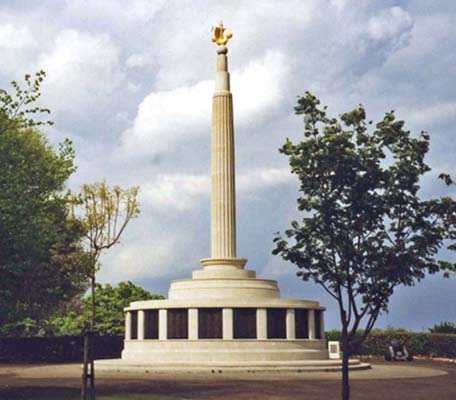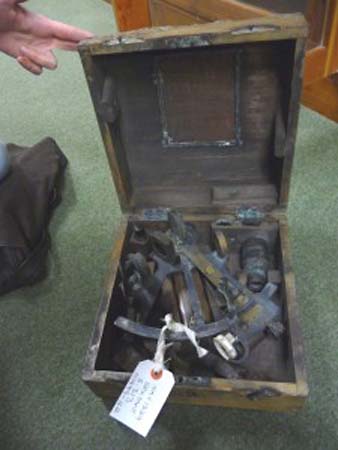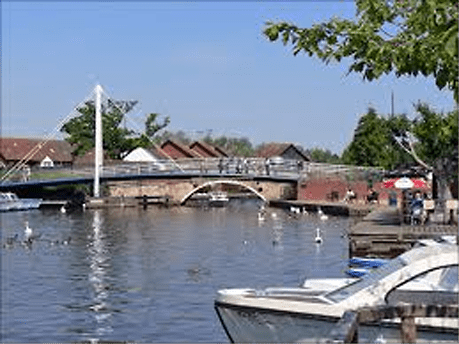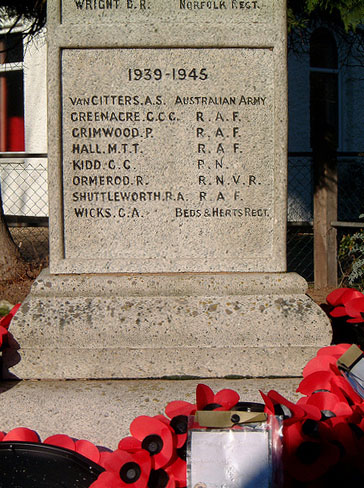If you cast your minds back what seems now a very long time, my continuing researches about the German bomber shot down in St.Just in western Cornwall on September 27th 1942 , had led me to the cemetery in Penzance. I have already spoken about some of the graves to be found there, and this article continues that theme.
This beautiful, tranquil place contains seventy one Second World War burials, including the six graves of the crew of H.M.Trawler “Royalo”:
They were killed when their vessel was sunk by a magnetic mine on September 1st 1940 just outside Penzance Harbour, around one mile from the seafront. The orange arrow gives the approximate position:
The “Royalo” was built by Cook, Welton & Gemmell of Beverley, Yorkshire, and was launched on December 6th 1915, being fully completed by August of 1916. I have been unable to trace any photographs of the vessel. A ship of only 248 tons, when the Great War broke out, it was immediately requisitioned and converted into a minesweeper. After the end of the Great War, in 1919, it was returned to its owners. In 1933 the ship passed into the ownership of Sleight & Humphrey of Grimsby, only for it to be requisitioned for a second time in November 1939, just after the beginning of the Second World War. This time it was converted into an APV, an “Auxiliary Patrol Vessel”. In 1940, the vessel was converted for the second time into a minesweeper and given the serial number of FY825. It was armed with just one six pounder anti-aircraft gun.
A short but very vivid account of the ship’s sinking is given on the “Hearts of Oak” website:
“The “Royalo”, under Commanding Officer, Skipper William Durrant Warford RNR, was sweeping Mount’s Bay clear of mines which had been previously laid there by a German aircraft. Around midday, there came the sound of a huge explosion, which was easily heard in Penzance. My brother-in-law remembers, as a child, hearing the sound of an enormous explosion. He ran out of the house, and down the road, to see nothing but a pall of smoke; there was no sign of the vessel. She had been blown up by a magnetic mine, and a column of water had lifted her out of the water.
And she was gone.
The Penzance lifeboat was launched, and small boats came to the rescue of the survivors.
The “Royalo” had sunk in position 50.06N : 05.30W, about one mile off Penzance.”
On at least one other website, Lieutenant Irvine Willox Watt is given as the Commanding Officer.
Given the dramatic way in which the “Royalo” had met its end, its position remained well known over the years to the people of Penzance. In 1962 a group of divers explored the wreck, which lay some ten metres below the surface. They were able to recover a wooden box. It turned out to contain a sextant, which is a navigational aid. This particular one was manufactured in 1939 by the celebrated Hughes & Son Ltd. of London. The Royal Museum at Greenwich acquired the sextant at some point during the 1970s:
Of the casualties buried in Penzance Cemetery, Henry Thomas Dukes was an Engineman in the Royal Naval Patrol Service who was forty five years of age at the time of his death:
He was the husband of Ellaline Isabell Dukes of Grimsby, Lincolnshire. The rather bittersweet verse inscribed on the lower section of his gravestone reads…
Honoured in life
Treasured in Death
A Beautiful Memory
Is all we have left.
William Henry Greenfield was a Stoker in the Royal Naval Patrol Service. His age at the time of his death has not been recorded, and I have been unable to trace any further details about him:
Raymond Ormerod was a Telegraphist in the Royal Naval Volunteer (Wireless) Reserve and was twenty years old at the time of his death:
He was the son of Reginald and Octavia Ormerod, of Wroxham, Norfolk:
His mother had the following verse inscribed on the lower section of his gravestone:
Loved one
You are never forgotten
In my heart
You are always near
Mother
Raymond is listed on the memorial plaque in the Church of St Mary the Virgin in Wroxham:
He also appears on the town’s War Memorial:
Thomas Gardner Taylor was an Ordinary Signalman in the Royal Navy who was twenty one years of age at the time of his death:
He had already been awarded the Distinguished Service Medal. He was the son of Thomas Gardner Taylor and Hannah Ann Taylor, of High Heaton, Newcastle-on-Tyne. The verse inscribed on the lower section of his gravestone reads:
Gone his happy smiling face
Those happy cheerful ways
His heart won many friends
In happy bygone days
Robert John Tilley was a Seaman in the Royal Naval Patrol Service who was twenty seven years of age at the time of his death:
The verse inscribed on the lower section of his gravestone reads…
No one knows
How much we miss him
None but aching hearts
Can tell
Mum and Mary
Robert John Tilley’s sacrifice is commemorated on the Memorial of the Whitstable Royal British Legion Club in Kent.
Irvine Willox Watt was a Lieutenant in the Royal Naval Patrol Service who was thirty three years of age at the time of his death. He was the son of G. Fieldes Watt and Jean Fieldes Watt, of Kensington, London.
Of the tiny crew of the Royalo, at least one is not buried here in Penzance, Sam Lockwood-Dukes was the son of Samuel and Emily Lockwood-Dukes, of Worsborough Bridge in distant South Yorkshire. He was twenty two years of age when he was killed. He was not buried with the rest of his naval family in Penzance, as his parents no doubt wanted to be able to place flowers on his grave regularly, so he was interred in Saint Thomas Church Cemetery in Worsborough Dale.
Because of the nature of the incident, however, not all of the casualties were found.
One of these was Engineman Robert William Edward Grant Burgoyne who was an amazing sixty four years of age at the time of his death. He was the son of Robert and Sarah Burgoyne and the husband of Rosina Burgoyne. They all lived in Willington Quay, Northumberland. His sacrifice is commemorated on the Royal Naval Patrol Service Memorial at Lowestoft:

Second Hand Leonard Rye was in the Royal Naval Patrol Service. He was twenty six years of age at the time of his death and a holder of the Distinguished Service Medal. He was the son of Charles John and Clara Louise Rye and the husband of Florence Lilian Rye. They all lived in Hull in East Yorkshire. His sacrifice is commemorated on the Royal Naval Patrol Service Memorial at Lowestoft:
Engineman Jim Walker Pitts was twenty eight years of age at the time of his death. He was the son of Mr and Mrs James Pitts and the husband of Joan Agnes Norah Pitts. They all lived in Great Yarmouth, Norfolk. His sacrifice is commemorated on the Royal Naval Patrol Service Memorial at Lowestoft:
Surely one of these gallant seamen must be in this grave, whose date is the same, as the “Royalo”…
I said that I had been unable to trace a photograph of the unfortunate “Royalo”. That is true, but I did find this…
And this…
“Full fathom five thy father lies;
Of his bones are coral made;
Those are pearls that were his eyes:
Nothing of him that doth fade,
But doth suffer a sea-change
Into something rich and strange.
Sea-nymphs hourly ring his knell:
Ding-dong.
Hark! now I hear them—Ding-dong, bell.”



















